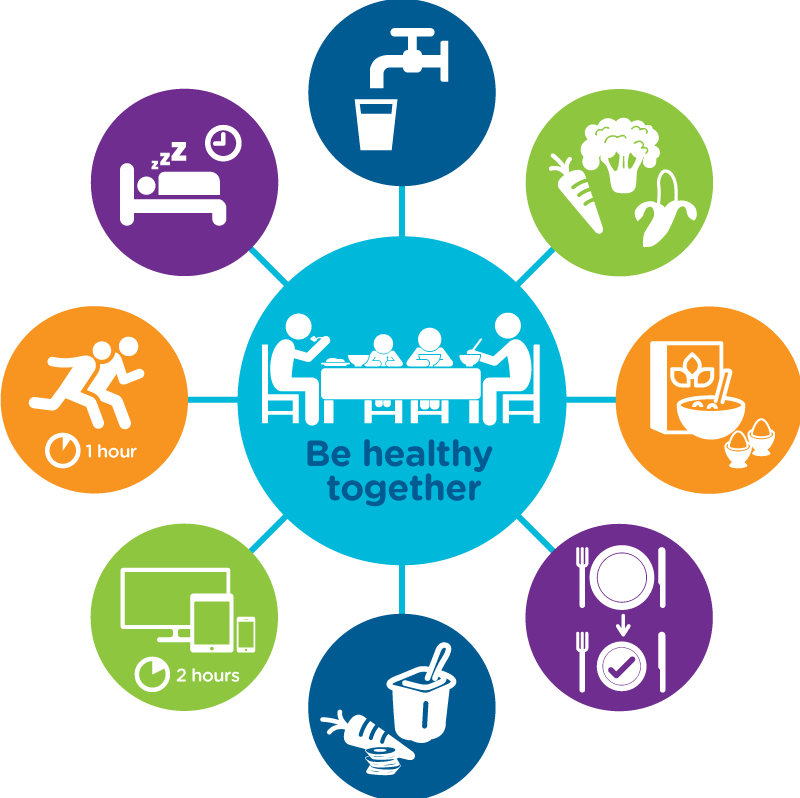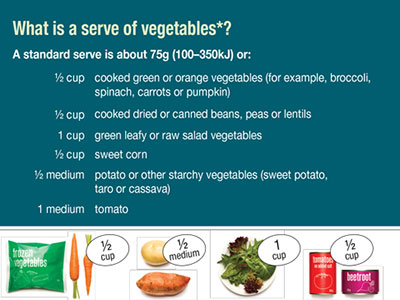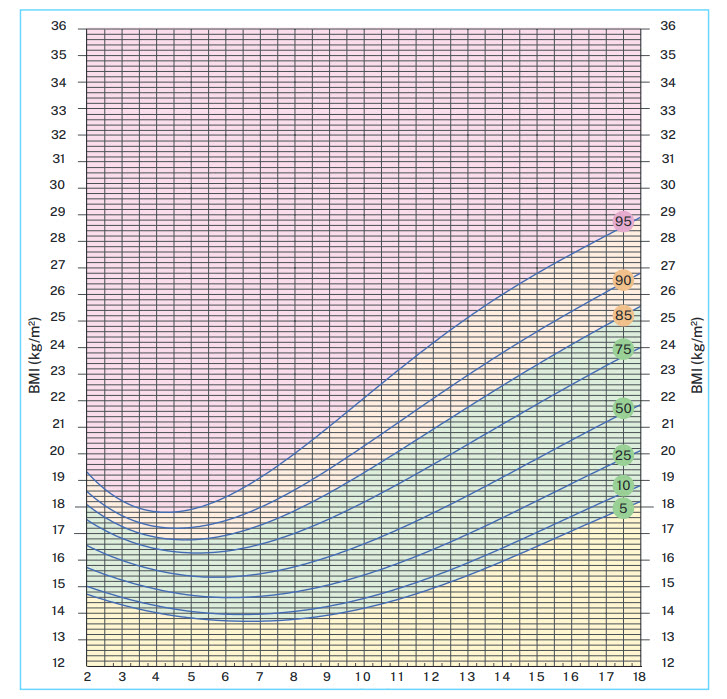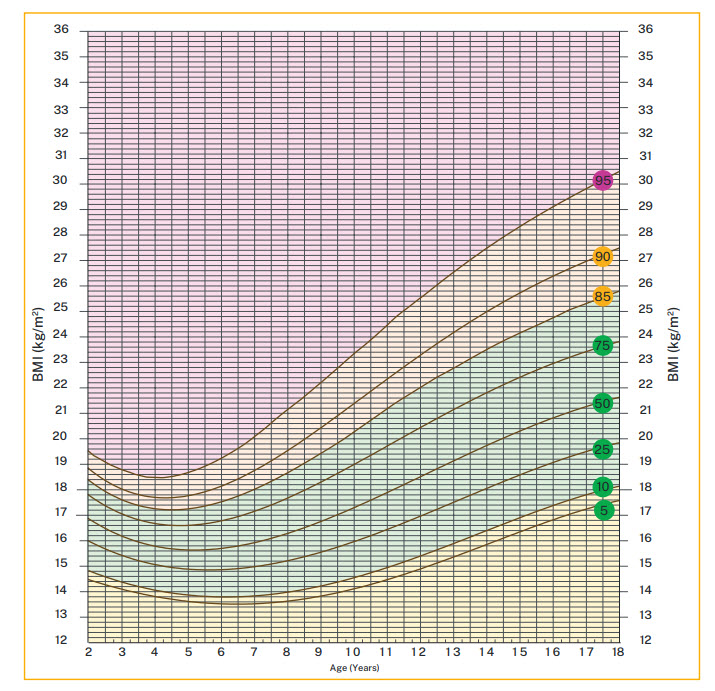Healthy weight calculator for children and teenagers
This calculator is a tool to help health professionals assess healthy growth and development in children. It is not a full assessment. All results need to be discussed with a health professional who knows the child and their family.
For parents and carers
It’s not always easy to tell if a child is healthy. This calculator helps health professionals see how they are growing, and there are many other factors that also affect a child’s health and development. It’s best to visit your GP or healthcare provider to discuss your child’s health.
Your results suggest the child measured is
based on an year old at kg and cm BMI-for-age is at the percentile.


healthy weight Healthy
weight Above a
healthy weight
The results explained:
The result suggests the child being measured is below a healthy weight for their age and height.
Low weight for height and age can occur for many reasons. If a child is below a healthy weight or not growing, they should see a GP or other health care provider.
Children’s growth can change over time, so it’s important to check a child’s height and weight every three months.
Check the measurements you have entered and if you are concerned, talk to your GP or other health care provider about your child’s growth.
Keep records of your child’s height and weight, and regularly take your child to your GP or other health care provider to monitor their growth.
The result suggests the child being measured is below a healthy weight for their age and height.
Low weight for height and age can occur for many reasons. If a child is below a healthy weight or not growing, they should see a GP or other health care provider.
Children’s growth can change over time, so it’s important to check your child’s height and weight every three months.
Check the measurements you have entered and if you are concerned, talk to your GP or other health care provider about your child’s growth.
Keep records of your child’s height and weight, and regularly take your child to your GP or other health care provider to monitor their growth.
The result suggests the person being measured is below a healthy weight for their age and height.
They can talk to a GP or health care provider about their weight.
Growth can change over time, so it’s important to check height and weight every three months.
Check the measurements you have entered and if you are concerned, talk to a GP or other health care provider.
The result suggests the child being measured is a healthy weight for their height and age.
Being a healthy weight is good news. Remember, it is important for children to eat a healthy and varied diet and to be physically active for at least an hour each day.
Children’s growth can change over time, so it’s important to check a child’s height and weight every three months.
The result suggests the child being measured is a healthy weight for their age and height.
Being a healthy weight is good news. Remember, it is important for children to eat a healthy and varied diet and to be physically active for at least an hour each day.
Children’s growth can change over time, so it’s important to check a child’s height and weight every three months.
The result suggests the person being measured is a healthy weight for their age and height.
Being a healthy weight is good news. Remember, it is important to eat a healthy and varied diet and to be physically active for at least an hour each day.
Growth can change over time, so it’s important to check height and weight every three months.
The result suggests the child being measured is above a healthy weight for their height and age.
Children above a healthy weight may develop health problems in childhood, such as asthma; sleep problems; hip, knee and ankle problems; and high cholesterol or blood pressure.
Children who are above a healthy weight are also much more likely to become overweight adults, putting them at risk of health problems like heart disease, diabetes and cancer.
You can do a lot to help your whole family develop healthier eating habits, and keep them active and well.
Children’s growth can change over time, so it’s important to check your child’s height and weight every three months.
The result suggests the child being measured is above a healthy weight for their height and age.
Children above a healthy weight may develop health problems in childhood, such as asthma; sleep problems; hip, knee and ankle problems; and high cholesterol or blood pressure.
Children who are above a healthy weight are also much more likely to become overweight adults, putting them at risk of health problems like heart disease, diabetes and cancer.
You can do a lot to help your whole family develop healthier eating habits, and keep them active and well.
Children’s growth can change over time, so it’s important to check your child’s height and weight every three months.
The result suggests the person being measured is above a healthy weight for their height and age.
This means you weigh more than is healthy for someone of their height, age and sex. Being above a healthy weight can put them at risk of poor health as an adult.
There are many easy changes they can make and there is lots of support for a healthy lifestyle available.
Growth can change over time, so it’s important to check height and weight every three months.
The result suggests the child being measured is well above a healthy weight for their height and age.
Children above a healthy weight may develop health problems in childhood, such as asthma; sleep problems; hip, knee and ankle problems; and high cholesterol or blood pressure.
Children who are above a healthy weight are also much more likely to become overweight adults, putting them at risk of health problems like heart disease, diabetes and cancer.
You can do a lot to help your whole family develop healthier eating habits, and keep them active and well.
Children’s growth can change over time, so it’s important to check your child’s height and weight every three months.
The result suggests the child being measured is well above a healthy weight for their height and age.
Children above a healthy weight may develop health problems in childhood, such as asthma; sleep problems; hip, knee and ankle problems; and high cholesterol or blood pressure.
Children who are above a healthy weight are also much more likely to become overweight adults, putting them at risk of health problems like heart disease, diabetes and cancer.
You can do a lot to help your whole family develop healthier eating habits, and keep them active and well.
Children’s growth can change over time, so it’s important to check your child’s height and weight every three months.
The result suggests the person being measured is well above a healthy weight for their height and age.
This means they weigh more than is healthy for someone of their height, age and sex. Being above a healthy weight can put young people at risk of poor health as an adult.
There are many easy changes they can make and there is lots of support for a healthy lifestyle available.
Growth can change over time, so it’s important to check height and weight every three months.
Email your results
Send these results to your inbox to save them for later or to start a discussion with a health professional. Enter your email below.
What can you do?
Go4Fun® is a healthy lifestyle program for children aged 7-13 years who are above a healthy weight, and their families. Programs are run during the school term and are led by trained, qualified health professionals.

Join the Get Healthy Service (16 years and over)
Free personalised telephone coaching to help improve eating habits, physical activity levels, and to achieve and maintain a healthy weight.

8 Healthy Habits
Here are eight ways to help you maintain a healthier lifestyle:
Drink water instead of soft drink, juice or cordial
Choose healthier snacks and fewer unhealthy treat foods
Aim for at least 5 serves of vegetables and 2 serves of fruit every day
Limit recreational screen time
Start each day with a healthy breakfast
Be active for at least 1 hour a day, every day
Be mindful of portion size and when you feel full
Get enough sleep


Healthy Eating Active Living
Visit healthyliving.nsw.gov.au

Recommended Number of Serves for children, adolescents and toddlers
Dietary patterns in a table format provide the nutrients and energy needed for all children and adolescents of average height with sedentary to moderate activity levels.

Recommended Serve Sizes
The Australian Dietary Guidelines inform people of different ages, life stages and gender, the minimum number of serves from each food group they need to eat each day, to make sure they get the full amount of nutrients their body needs.

Healthy habits and a healthy weight: Tips for your child and family
Children learn by example. One of the best ways to help your child be active and eat well is for you and your family to do it too.
BMI for age and sex chart




Date of measurement:
Supporting Information
Children need to grow, but they are healthiest if they stay within a certain weight range for their height and age as they grow. This is called a healthy weight for their age.
Children above a healthy weight may develop health problems in childhood such as asthma, sleep problems, hip, knee and ankle problems and high cholesterol or blood pressure.
Children who are above a healthy weight are also much more likely to become overweight adults, putting them at an increased risk of health problems like heart disease, diabetes and cancer.
It is recommended you accurately measure your child’s height and weight every three months, and use the healthy weight calculator to find out whether your child is at a healthy weight. Record the measurements over time, so that you can discuss them with your GP or health care provider.
- The healthy weight calculator uses your child’s height and weight, to calculate a body mass index (BMI).
- The calculator then plots your child’s age and BMI on the US Centre for Disease Control’s BMI for age chart for girls or boys, and uses the chart to determine whether the child is a healthy weight for their age.
- The calculator can also describe this as a percentile. Your child is a healthy weight if their BMI for age and sex is from the 5th to below the 85th percentile. A child below the 5th percentile is below a healthy weight (underweight), and a child at the 85th percentile and above is above a healthy weight.
The weight status calculation for children and teenagers is based on the BMI-for-age charts developed by the US Centres for Disease Control and Prevention (CDC 2000). These charts are designed specifically for children from 2 to 18 years of age, and the charts are recommended for use in Australian children aged 2 to 18 years. These are the charts your GP or health professional uses.
| Weight Category | Percentile Range |
|---|---|
| Below a healthy weight | Less than the 5th percentile |
| Healthy Weight | 5th percentile to less than the 85th percentile |
| Above a healthy weight | 85th to less than the 95th percentile |
| Well above a healthy weight | Equal to or greater than the 95th percentile |
- Take the height measurement on hard flooring (i.e. without carpet) and against a flat wall.
- Remove shoes and socks, bulky clothing and hair accessories.
- Have the child stand straight with back against the wall. Make sure feet are flat, heels are touching the wall and eyes are facing straight ahead (see illustration).
- Place a pencil/book horizontally on the top of the head.
- Draw a small mark where the pencil meets the wall (don’t forget to wipe it off when you are finished).
- Using a tape measure, measure the distance from the pencil mark on the wall to the floor.
- Record the measurement to the nearest 0.1 centimetre.
Download PDF: Guide to accurately measuring the height of a child

Measuring a child’s weight:
- Place scales on hard surface (such as tile or wood) and avoid placing on carpet. If possible, use a digital scale.
- Remove shoes and heavy clothing (like a jacket or thick jumper).
- Have the child stand with both feet in the centre of the scale.
- Record the weight to the nearest 0.1 kg (or ½ kilogram if not using digital scales).
TIP: If possible, weigh the child first thing in the morning before breakfast. If you intend to repeat the measurement in future, try to repeat it at the same time of day. Remember weight can vary across the day.
Please note:
This calculator is a tool to help health professionals assess healthy growth and development in children. It is not a full assessment. All results need to be discussed with a health professional who knows you and your child.
Visit your GP or local health professional if you want to know more about your child's growth or development.
Information about this chart is available at pro.healthykids.nsw.gov.au/calculator